No matter the size or type of your home be it a sprawling house, or a cozy apartment, one thing is certain it gets dirty. Cleaning your living space doesn’t have to be a tedious chore when you embrace a smarter approach and use the correct tools for each cleaning situation
For instance, you might have to clean a vast outdoor area and you’re using your pressure washer spray wand. However, this quick-connect nozzle can quickly turn into a time-consuming and frustrating ordeal. Not to mention the risk of leaving unsightly score marks on your concrete only adds to the challenge. But you could have easily sidestepped those problems by simply using a surface cleaner attachment instead of a spray wand.
Designed specifically for tackling expansive outdoor spaces, surface cleaners are the ultimate game-changers. These remarkable tools are your key to achieving flawlessly clean concrete without any random scoring marks. The spinning spray bar on surface cleaners is the secret to efficient cleaning. With its high-speed rotation, it effortlessly tackles dirt and grime, leaving you with outstanding results in a single sweep. But what happens when the pressure washer surface cleaner won’t spin? That’s exactly the issue we’re going to address here today.
Why Is My Surface Cleaner Not Spinning?
What makes a surface cleaner spin? A surface cleaner spins through the combination of water pressure directed through angled nozzles on the rotating spray bar, creating a rotational force that allows for efficient cleaning. The presence of a swivel joint and well-lubricated bearings ensures smooth and effortless spinning motion. If this is how a surface cleaner works, what causes the spinning to get disrupted? Well, your pressure washer surface cleaner won’t spin, it’s mainly because of clogged ports and nozzles that may have dirt or debris in them. While this is one of the common reasons behind a non-spinning surface cleaner, there might be other issues as well:
- Lack of lubrication on the bearings or swivel for smooth spinning.
- Trapped dirt on the inline filters could hinder the spinning action.
- When the angle of the thrust is not right.
- If your pressure washer detects overheating, it may automatically shut down, affecting the surface cleaner’s rotation.
- Check for any obstructions like small stones that could be blocking the rotation of the surface cleaner
Non-Spinning Surface Cleaner: Troubleshooting
In this guide, we’ll explore the troubleshooting steps to resolve a non-spinning spray bar, helping you restore the full potential of your cleaner.
Sufficient Lubrication
Inside the surface cleaner, there is a small component, such as a bearing or bushing, that enables the rotation of the spray bar. Over time, this component may experience friction or become dry, resulting in limited or no spinning action. Lubricating the small component inside the bar and cleaning out the ports can often resolve the nonspinning issue. Moreover, proper lubrication of the bearings is crucial for optimal performance. And don’t forget to replace the bearings if they’re oddly shaped or broken.
Unclog the Port or Nozzle
To troubleshoot the issue, you need to remove and inspect the nozzles for blockages and clean the swivel. If you’re looking for a more advanced approach, using a welder cleaner tip can be quite effective for cleaning surface cleaner nozzles. Prior to cleaning, it’s important to untwist the nozzles using a wrench.
In case the welder cleaner tip method doesn’t yield the desired results, an alternative option is to soak the nozzles in a bucket filled with hot water. This can help loosen the accumulated dirt, which can then be further cleaned using a needle or a paperclip. In case the nozzle cleaning does not solve the problem, you can check if the feed line is clogged. You can use a dual gun system, allowing him to switch to a different gun with a separate feed line if needed.
Once the nozzles are thoroughly cleaned, you can twist them back onto the spray bar, and your surface cleaner should function properly once again.
Adjusting Thrust Angle
If lubrication and cleaning do not work, adjusting the angle of the thrust may be necessary. To adjust the angle, remove the component, place it in a vise, and gently twist it to the right using a screwdriver. By making slight adjustments to the angle, you can ensure optimal contact between the spray bar and the cleaning surface. This allows the water jets to generate the required force for spinning and improves the overall performance of the surface cleaner.
Clean the Swivel Filter
If the high-pressure filter gets excessively dry, it can hinder the spraying of water from both nozzles and cause the spray bar to stop rotating. This is often encountered after cleaning a heavily soiled surface. To address this issue, you’ll need to clean or replace the filter. Here’s a step-by-step guide to help you through the process:
- Disconnect the Swivel Piping
Start by disconnecting the swivel piping from the surface cleaner. This will allow you better access to the components that need attention.
- Untwist the Swivel Cap
Using a wrench, untwist the cap of the swivel. Check for any accumulated dirt or debris that might be causing the obstruction. If the cap is dirty, clean it thoroughly with a damp cloth.
- Untwist the Spray Bar
Next, untwist the spray bar from the bottom side of your surface cleaner. This will expose the bottom of the swivel for further inspection.
- Remove the Cartridge
Using your finger or a screwdriver, gently push up into the bottom of the swivel to make the cartridge pop off. This will allow you to examine the swivel O-ring and determine if it needs cleaning or replacement.
- Check the Swivel O-Ring
Inspect the swivel O-ring for any signs of damage or debris. If it can be cleaned, use a damp cloth and a needle to carefully remove any dirt or obstructions. If the O-ring is worn or damaged, it will need to be replaced. Ensure that you select the correct size for the replacement O-ring.
- Check the Filter Screen
While inspecting the swivel components, also check the condition of the filter screen. If it appears clogged or damaged, replacing it might be necessary for optimal performance.
- Reassemble and Secure
Once you have cleaned or replaced the necessary components, carefully put everything back in place. Make sure all connections are secure and tightened properly to prevent any leaks or disruptions.
Pressure Washer Issue
Sometimes, the non-spinning issue lies with the pressure washer itself. Low water pressure or the pressure washer not pulling water from the tank can impact the surface cleaner’s functionality. This happens when your surface cleaner gets overheated. Pressure washers shut themselves off if they overheat. You might have been using your pressure washer in an enclosed space with little cool air, so your engine will not stay cool. Here’s how you solve the problem:
- Ensure adequate cooling time: Allow the cleaner to cool down completely before using it again.
- Work in a well-ventilated area: Choose an area with good air circulation to prevent excessive heat buildup.
- Monitor and take breaks: Keep an eye on the cleaner while using it and take breaks if necessary to avoid overheating.
What size pressure washer is best for a surface cleaner?
Not using the perfect size of pressure washer might be a reason why your surface cleaner is spinning slowly. First, it’s a misconception that a pressure washer surface cleaner’s cleaning capacity improves with its size. For example, selecting a 36-inch surface cleaner for a 3GPM cleaning machine is a grave mistake. A small motor lacks the ability to rapidly rotate such a large deck. While it is true that a smaller pressure washer surface cleaner may not clean a wide area all at once, it allows for swifter movements.
Here’s a chart for your surface cleaner size based on the GPM of your surface cleaning machine:
| Surface Cleaner Size | Recommended GPA | Minimum GPA |
| 16 to 20 | 4 | 2 |
| 20 to 24 | 6 | 4 |
| 30 | 8 | 6 |
Surface Cleaner Tips and Maintenance
- Clogged nozzles are a common issue in the field, and it is recommended to have spare nozzles instead of trying to unclog them on-site.
- Testing the nozzles before each use is important to ensure there are no clogs that could interrupt the cleaning process.
- Use a 9/16-inch wrench to remove and replace the nozzles, ensuring that the ridges on the surface cleaner nozzles are properly aligned.
- Clogged nozzles can be cleaned using a welder cleaning tip tool or a dental pick set to remove any grit or debris.
- In case of cartridge or o-ring replacement, a 7/16 inch wrench is needed to remove the surface cleaner bar, and it is recommended to replace the entire cartridge assembly. The quad seal at the bottom of the surface cleaner should also be checked and replaced if necessary.
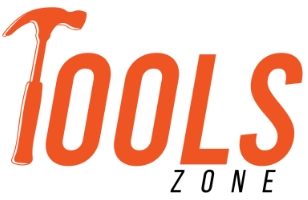

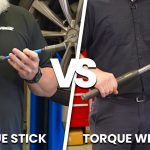
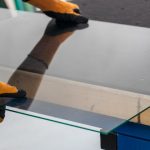


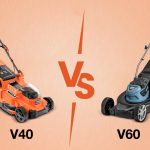
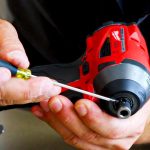
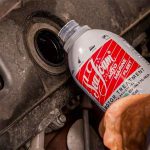
Leave a Comment